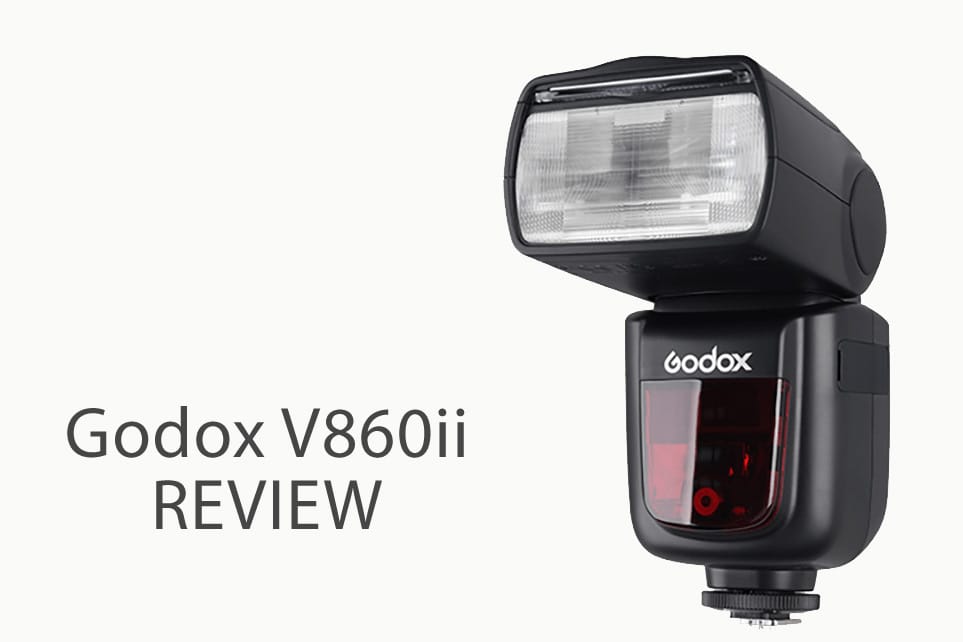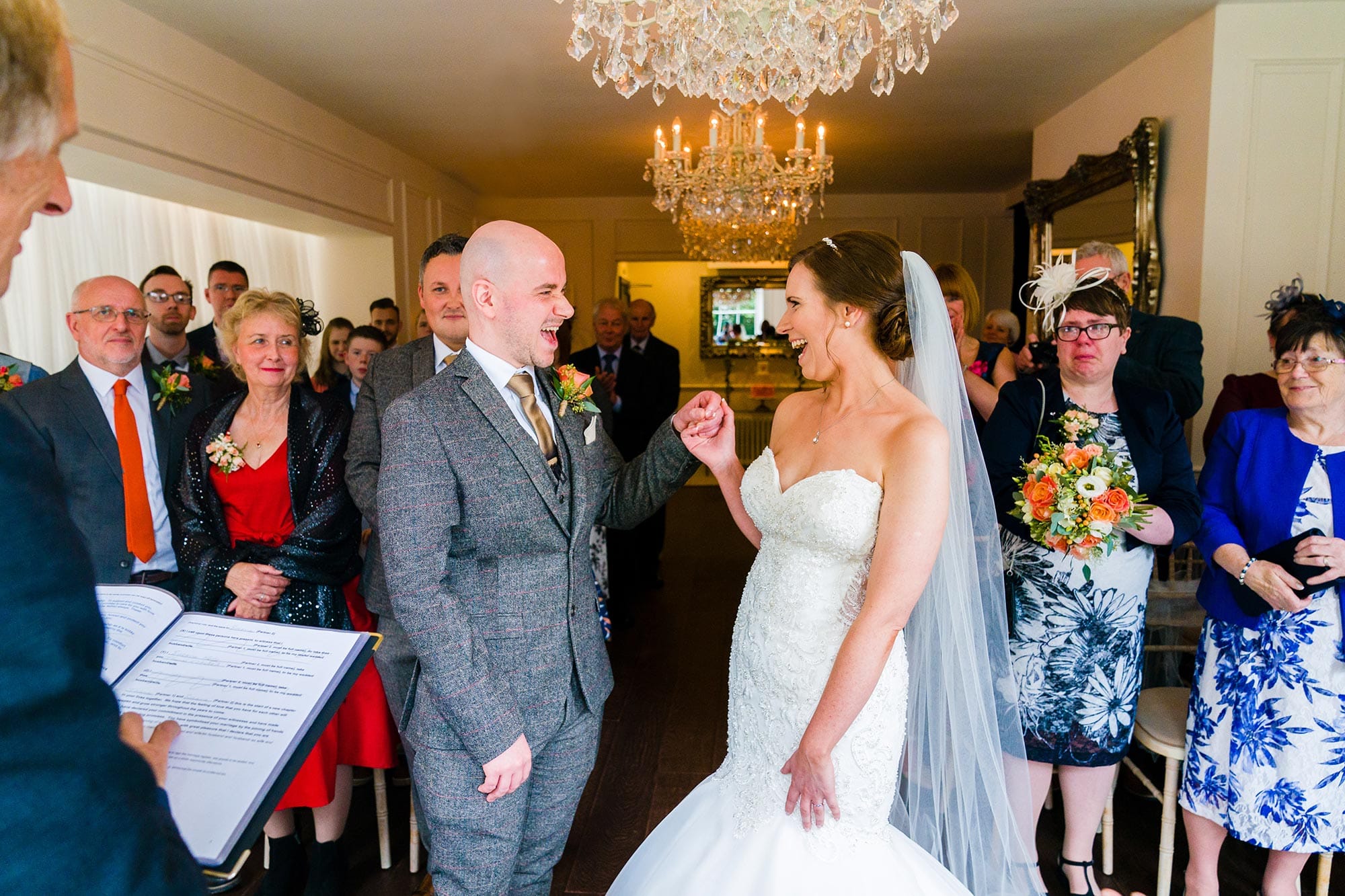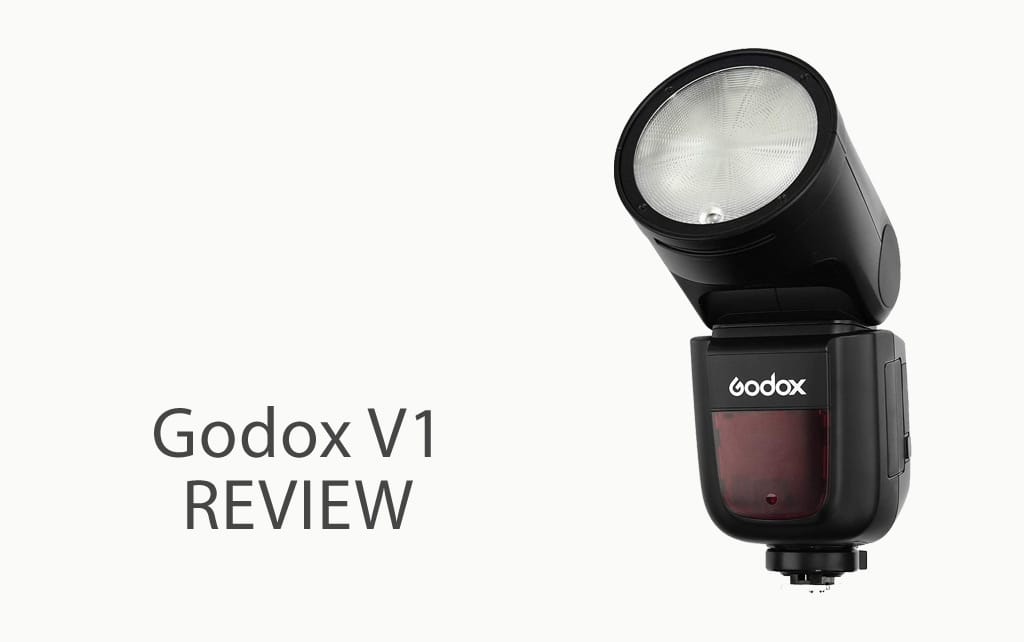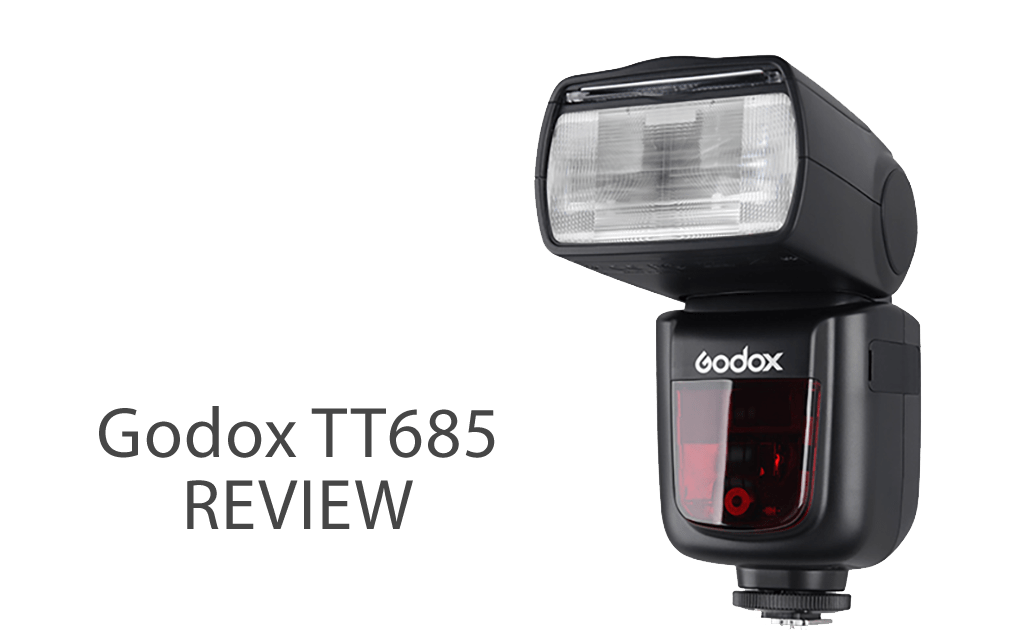
Godox TT685 Review
I've realised that I've become a bit of a speedlight junkie. Currently I have nine. Well it would have been eleven but I gave a couple away to bring me down to seven. Now after buying the Godox TT685N speedlights, it's inched up again. In my defence (in case the wife is reading) the Godox's are supposed to help me rationalise the number of flashes I need to carry. So if all goes to plan then I should be able to reduce the number. Read my Godox TT685N review to see if I can reach my goal.
You see the problem I've had is that I use a lot of off camera flash (OCF) during weddings. I've tried all sorts of triggers & flashes, including the very popular Yongnuo YN622's. However the problem is that during a wedding, speed and simplicity are essential. So having triggers was one more thing to carry, one more set of batteries to charge & check. One more thing to troubleshoot when things go wrong. Space is of course always at a premium in every wedding photographer's bag.
For the past year I've been using the Yongnuo 560's mk3 & mk4's. These have been so cheap, so easy and so simple to use. However there have been two drawbacks. Firstly they are manual flashes only meaning I cannot really use them on camera. Secondly they have a common fault where randomly the IGBT inside the flash will break and it will then only ever fire full power regardless of setting. I've had two break over the course of the year, once mid wedding speech which sent me into a bit of a panic.
The result has meant that I've been turning up to weddings with 4x YN560's, 3x TTL flashes (Nikon SB-910, Shanny SN600SN & Pixel X800N). Since I also use a Godox AD-360 flash for when I need more power I've also had in my bag the Ft-16 trigger.
Basically I've got a very eclectic range of equipment none of which talk to each other. What a pain! I've made it work for me but it's far from ideal. I briefly flirted with the idea of getting the Ving 860's and standardising on the FT16 triggers but what stopped me was having to use the little clip on FT-16S receivers. I was bound to lose them and in effect they were external receivers albeit small ones. Plus the FT16's use the 433Mhz frequency and many people have complained as a result the range was poor.
So I'll admit to being more than a little excited when I found out about Godox's new range, the TT685's and the Godox AD-360Mk2. The TT685's are TTL capable with built in triggers and they use the far superior 2.4Ghz frequency and they can all be controlled by the same X1N trigger! All of a sudden I can rationalise my kit down to one set. Same flashes, same trigger. It sounded like exactly what I needed.
A few clicks on eBay and voila! I now own two TT685N's. The X1N trigger is so new that I can't find any UK stock so currently impatiently waiting for mine to arrive from China. When it does I will update this review.
Now you know how I got here, it's time to actually start talking about the Godox TT685 itself.
BUILD QUALITY
Godox like their competitors have seriously upped their game in terms of the plastics used. Compared against the Nikon SB910, it feels just as solid. I like the simplicity of the on/off switch although it has caught a couple of times when I've put it into my bag and turned itself on. My simple fix is to put them in my bag upside down!
All the buttons feel nice and the dial gives good feedback when turning so even when in the dark you will be able to tell what you are changing. The set button doesn't freely rotate which is nice to see.
I have no finger nails so I find it impossible to get the bounce card/wide angle diffuser up without using a coin or something to lever it out.
I prefer the newer style hotshoe locking mechanism used in the Canon 600's that have been widely copied by Yongnuo, Shanny, Pixel etc. The Godox has gone for the older screw down type.
Now this may be just a one off but one of my TT685's didn't quite lock onto my hotshoe securely. Despite making sure the locking screw was tightly down you could just pull the flash off without much force. I found this out to my dismay when I picked up my camera by the flash during a wedding and the camera fell down and hit the floor. Thankfully the lens hood took the brunt of the impact and no lasting damage was done. But my trust in the TT685 was shaken for the day and I went back to my old units.
A quick email to my supplier and they sent me a replacement hotshoe that screwed in easily and solved the problem.
As a result, I haven't made up my mind yet how I feel about the build quality. Or maybe what I should say is the build quality is nice but maybe quality control needs improvement?
FEATURES
When I first turned on the flash i have to say the LCD display is very confusing. The main thing to realise is that the button on the far right with the lightning sign changes the function of the flash (eg. On camera/commander/slave mode etc) then the mode button on the right changes the mode for that function. So for example you can choose on camera mode then press mode to switch from TTL to manual. Settings can be changed by pressing and holding the Zm/C.Fn button for 3 seconds.
As you can see from the picture below there are several functions:
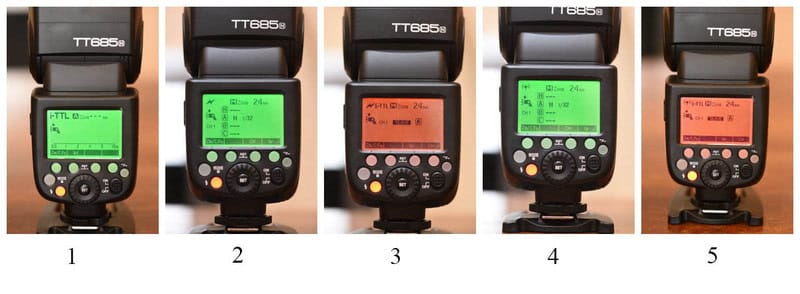
- On camera mode (TTL)
- Optical transmission master mode
- Optical transmission slave mode
- Radio master mode
- Radio slave mode
The biggest problem I had was the confusion between optical transmission mode and radio mode. What was happening was I'd set one flash to master, the other to slave and sometimes it would work...sometimes not. Thankfully a fellow photographer, Frank Wood on Facebook pointed out the little symbols that I had missed. The lightning bolt was optical, the antenna was for radio. If you are confused about what to use, let me say this. Set both to radio. Ignore optical transmission mode. I have no idea why they even bothered. I don't know a single person who would use it.
Once i figured that bit out then I could get them triggering reliably. I have to say at this point that I am not a big fan of the master mode interface. It's not the easiest to navigate but then it's identical to the one found on Nikon's and I hated that too. It's nowhere near as effortless as the Yongnuo 560TX which really is as simple as it gets. I'm really REALLY hoping the XT-1N will be the game changer. Being able to quickly change settings with minimal button pressing is absolutely crucial for a wedding photographer and can mean the difference between getting the shot or not.
One noticeable feature that's missing is the fact you cannot remotely change the zoom on slave flashes's. If Yongnuo can do it on the basic 560's, why can't Godox?? That would have been the icing on the cake. C'mon Godox close but no cigar here. It's not a dealbreaker but it would have been good to see.
TTL ACCURACY
I wanted to test how accurate the TTL metering was. So I put my Nikon D750 on a tripod and took the following photos, all the the exact same settings. These photos are not edited and are straight out of the camera. Unfortunately I didn't notice until after I packed everything away that I slightly missed focussed on the model bride & groom but for the purposes of this test it doesn't matter.
The Shanny ever so slightly over exposes the subjects compared to the other two. Whereas the Godox's flash exposure is identical to the SB910. In short the Godox TTL metering does it's job.
FLASH POWER OUTPUT
I used my trusty Sekonic L358 light meter to measure each flash to see how powerful the Godox was in comparison to the others. Unsurprisingly the Nikon SB-910 was the most powerful with a meter reading of f/32 whereas the Godox and Shanny both came in with a consistent f/29. So basically the Nikon is a third of a stop more powerful. Definitely better but then you'd hope so at over £300 per flash! It's certainly not something I will be losing any sleep over. If I need more power I probably be bringing out the AD360 anyway rather than a speedlight.
IN THE FIELD
I've used the Godox flashes now at three weddings. Firstly I'm pleased to say that the hotshoe seems to be fixed and I've built up more confidence now that once it's locked in place, it's secure.
The white bounce card came off at my first wedding as I flipped it up which was very annoying and I couldn't get it back in. At home when I had more time I've done it now. It's still a little loose but it's stayed in since.
Overall though I've grown to really like the simplicity of having a TTL flash I can use on camera and very very quickly switch to off camera. For example I like to shoot with two cameras and now I have a Godox TT685 on each. I can now use either as a master controller for a remote flash (eg. my AD360 Mk2) or like I did the other day, I took one off one of my cameras, switched it quickly into slave mode and used it as a remote flash before putting it back on camera once more. The whole thing was done in seconds rather than have to go to my back, unzip it. Find the triggers, install them etc etc.
The biggest annoying thing that's worth mentioning though. On more than one occasion I'd switched the speedlight to optical commander mode, not wireless commander mode. Then I've stood there scratching my head as to why the flashes weren't firing. I've started to realise now and automatically double check the menu I am on before starting. But Godox please if you are reading, at least give us the option to turn the damn feature off in the config menus. It's just wasting my time and confusing in the heat of battle.
VALUE FOR MONEY & CONCLUSION

Currently I can see the Godox TT685N on Amazon for £96. The closest equivalent speedlight to this from Nikon would be the Nikon SB-5000 which is an eye watering £540! There is the smaller, cheaper SB-500 but that isn't an apples to apples comparison.
With that in mind it’s hard to argue that this flash isn’t good value given the feature set and the built in triggers, both slave and master mode.
On paper it does absolutely everything I want it to do plus a few things I wish they didn’t (Hello optical mode I mean you!). The hotshoe issue shook my faith a little and it really isn’t the most intuitive flash to start using.
Let’s be honest. I am a bit disappointed in that the TT685n isn’t perfect. It has a few annoying quirks and bugs that I hope Godox can sort. But I’m really appreciating the time saving and simplicity of being able to use each flash as a master controller and to control the AD-360 as well as in the future any other TT685’s. It’s just given me time back and is more flexible for the way I work.
I’ve just ordered a couple more of these so I can continue to unify my equipment. The build quality is still my biggest concern. The hotshoe really. So I hope the new ones prove this was a one off quality issue rather than sloppy engineering. The loose white card is a minor annoyance but again it just puts that little niggle in my mind about how sturdy it will continue to be when used professionally.
It isn’t a flash I would recommend for an amateur photographer looking for their first speedlight. The menu options are just too confusing due to the amount of features it has. For them I would recommend either the Shanny SN600SN or Pixel X800N standard. For the way I work, the pluses outweigh the minuses. If you are a professional wedding photographer then I would certainly urge you to give this range serious consideration.
Where to buy
Personally I've always purchased all my Godox gear from Amazon UK. This is mainly because I'm an Amazon Prime member and I can get things delivered the very next day.
If you are planning on buying the TT685 as your speedlight then please consider using the following link to help me fund future reviews and my hosting costs.
Godox TT685 Speedlight from Amazon UK
Thanks!
Share this story

